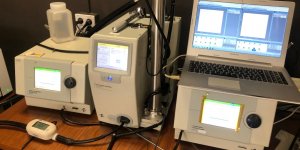| News / Science News |
Apathy not depression helps to predict dementia
Depression is often thought to be a risk factor for dementia but this may be because some depression scales used by clinicians and researchers partially assess apathy, say scientists from the universities of Cambridge, King’s College London, Radboud and Oxford.

Apathy not depression helps to predict dementia. Photo: Jude Beck/Unsplash
The study is the first to examine the relationships between apathy, depression, and dementia in individuals with cerebral small vessel disease (SVD). SVD may occur in one out of three elderly individuals, causes about a quarter of all strokes, and is the most common cause of vascular dementia.
The team studied two independent cohorts of SVD patients, one from the UK and the other from the Netherlands. Across both cohorts, they found that individuals with higher baseline apathy, as well as those with increasing apathy over time, had a greater risk of dementia.
In contrast, neither baseline depression nor change in depression had any detectable influence on dementia risk.
These findings were consistent despite variation in the severity of participants’ symptoms, suggesting that they could be generalised across a broad spectrum of SVD cases.
The relationship between apathy and dementia remained after controlling for other well-established risk factors for dementia including age, education, and cognition.
Lead author, Jonathan Tay, from Cambridge’s Department of Clinical Neurosciences said: “There has been a lot of conflicting research on the association between late-life depression and dementia. Our study suggests that may partially be due to common clinical depression scales not distinguishing between depression and apathy.”
Apathy, defined as a reduction in ‘goal-directed behaviour’, is a common neuropsychiatric symptom in SVD, and is distinct from depression, which is another symptom in SVD. Although there is some symptomatic overlap between the two, previous MRI research linked apathy, but not depression, with white matter network damage in SVD.
Jonathan Tay said: “Continued monitoring of apathy may be used to assess changes in dementia risk and inform diagnosis. Individuals identified as having high apathy, or increasing apathy over time, could be sent for more detailed clinical examinations, or be recommended for treatment.”
Over 450 participants – all with MRI-confirmed SVD – recruited from three hospitals in South London and Radboud University’s Neurology Department in the Netherlands, were assessed for apathy, depression and dementia over several years.
In the UK cohort, nearly 20% of participants developed dementia, while 11% in the Netherlands cohort did, likely due to the more severe burden of SVD in the UK cohort. In both datasets, patients who later developed dementia showed higher apathy, but similar levels of depression at baseline, compared to patients who did not.
The study provides the basis for further research, including the mechanisms that link apathy, vascular cognitive impairment, and dementia.
Recent MRI work suggests that similar white matter networks underlie motivation and cognitive function in SVD. Cerebrovascular disease, which can be caused by hypertension and diabetes, can lead to network damage, resulting in an early form of dementia, presenting with apathy and cognitive deficits.
Over time, SVD-related pathology increases, which is paralleled by increasing cognitive and motivational impairment, eventually becoming severe enough to meet criteria for a dementia state. (University of Cambridge)
YOU MAY ALSO LIKE





